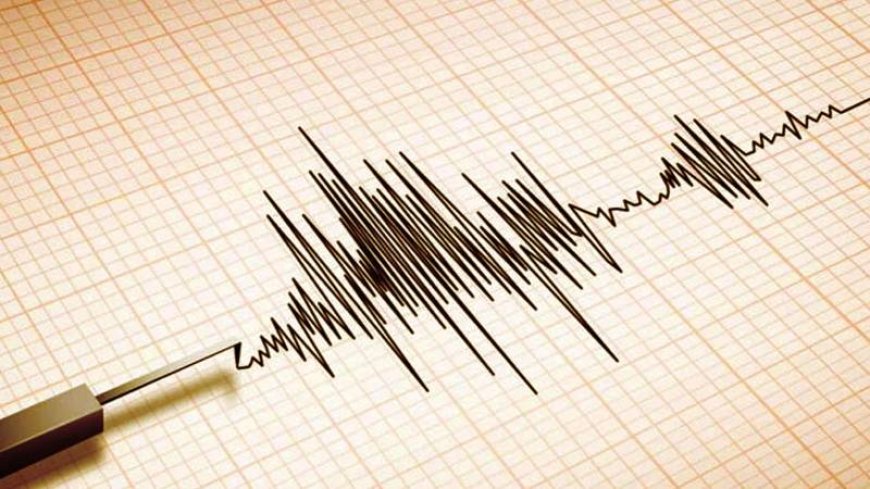3.2 Magnitude Earthquake Jolts Karachi, Confirms PMD
A 3.2-magnitude earthquake jolted parts of Karachi on September 12, 2025, sparking fresh concerns over the city’s seismic risks. Experts warn Karachi’s fault lines are active, putting lives and infrastructure at risk.

A 3.2-magnitude earthquake jolted parts of Karachi on Wednesday morning, according to the Pakistan Meteorological Department (PMD). The tremor, though minor, has once again raised public concerns about the growing seismic activity along the city’s vulnerable fault lines.
PMD reported that the earthquake struck at 9:34 am, with its epicenter located seven kilometers northwest of Malir at a shallow depth of 10 kilometers. While no damage to property or loss of life was reported, the tremor was strongly felt in Malir and surrounding neighborhoods, causing panic among residents who rushed outdoors fearing aftershocks.
Series of Low-Intensity Quakes in Karachi
This latest earthquake comes after Karachi experienced a string of low-intensity tremors earlier this year. From June 1 to June 22, multiple quakes ranging between 1.5 and 3.8 on the Richter scale were recorded, predominantly in and around Malir.
According to seismologists, these repeated quakes are a warning sign of underlying seismic activity. The Malir region, along with adjoining areas such as Landhi, Quaidabad, and Gadap, lies near fault lines that have remained dormant for decades but are now believed to be gradually releasing accumulated tectonic stress.
Experts Warn of Seismic Risks
Geological experts have repeatedly cautioned that Karachi’s proximity to several seismic faults puts the city at significant risk. The Allahbund fault, which runs parallel to Sindh’s coastline, and the tectonic junction where the Indian, Arabian, and Eurasian plates converge, make the metropolitan area particularly susceptible to earthquakes.
“Karachi is not traditionally known as a high-risk seismic zone compared to northern Pakistan, but its geological positioning cannot be ignored,” explained a senior geophysicist at the PMD. “The recent cluster of low-magnitude earthquakes indicates the release of energy along active fault lines, and while these are relatively minor tremors, the risk of a stronger seismic event in the future cannot be ruled out.”
Karachi’s Vulnerable Infrastructure
Urban planners and disaster management experts emphasize that Karachi’s densely populated neighborhoods, coupled with unregulated construction, increase the city’s vulnerability. Critical infrastructure such as bridges, flyovers, and residential high-rises may not be built to withstand a major earthquake, heightening the potential scale of devastation in the event of a powerful seismic shock.
According to the National Disaster Management Authority (NDMA), many structures in Karachi lack earthquake-resistant design, making seismic preparedness an urgent priority.
Residents Share Their Experiences
Local residents in Malir described feeling light but noticeable tremors. “I was at home when I felt the shaking. It lasted only a few seconds, but it was enough to scare us,” said Muhammad Farooq, a resident of Quaidabad. Others reported feeling vibrations in offices and schools, with some institutions briefly evacuating students and staff as a precaution.
Although no emergency response was required, social media platforms were quickly flooded with posts from citizens sharing their experiences and fears. Hashtags related to the Karachi earthquake trended under “Top Trending Today”, with many calling for stronger earthquake safety measures and awareness campaigns.
Past Earthquake Warnings in Sindh
Karachi’s seismic vulnerability has been highlighted in several past studies. Researchers have identified multiple dormant fault lines running beneath and around the city, which have the potential to produce earthquakes of moderate to severe intensity.
One of the most concerning geological threats remains the Makran Subduction Zone along Balochistan’s coast, where tectonic plate movement could trigger both earthquakes and tsunamis. Experts have stressed that the effects of such a disaster could extend to Karachi’s coastline, impacting thousands of lives.
Authorities Urged to Take Preventive Action
In response to Wednesday’s tremor, disaster management authorities have once again urged city planners and construction regulatory bodies to enforce stricter building codes. Officials have emphasized the need for public earthquake drills, improved awareness campaigns, and early warning systems to minimize risk.
“Karachi must learn from other urban centers globally that face similar seismic risks,” said an NDMA spokesperson. “Preparedness is key — from earthquake-resistant infrastructure to community awareness programs.”
Citizens’ Call for Safety Measures
Public sentiment in Karachi reflects growing concern. Many residents are calling for the government to establish a comprehensive seismic safety framework that includes:
-
Retrofitting of old buildings to meet earthquake resistance standards.
-
Emergency response training for schools, offices, and hospitals.
-
Regular city-wide evacuation drills in high-risk neighborhoods.
-
Awareness campaigns on how to respond during an earthquake.
Looking Ahead
While the 3.2-magnitude quake may appear insignificant in terms of damage, experts stress that it serves as a crucial reminder of Karachi’s seismic fragility. The city’s location near multiple tectonic boundaries makes it imperative for authorities and citizens to treat each tremor as a wake-up call.

 Mohammad Adil
Mohammad Adil